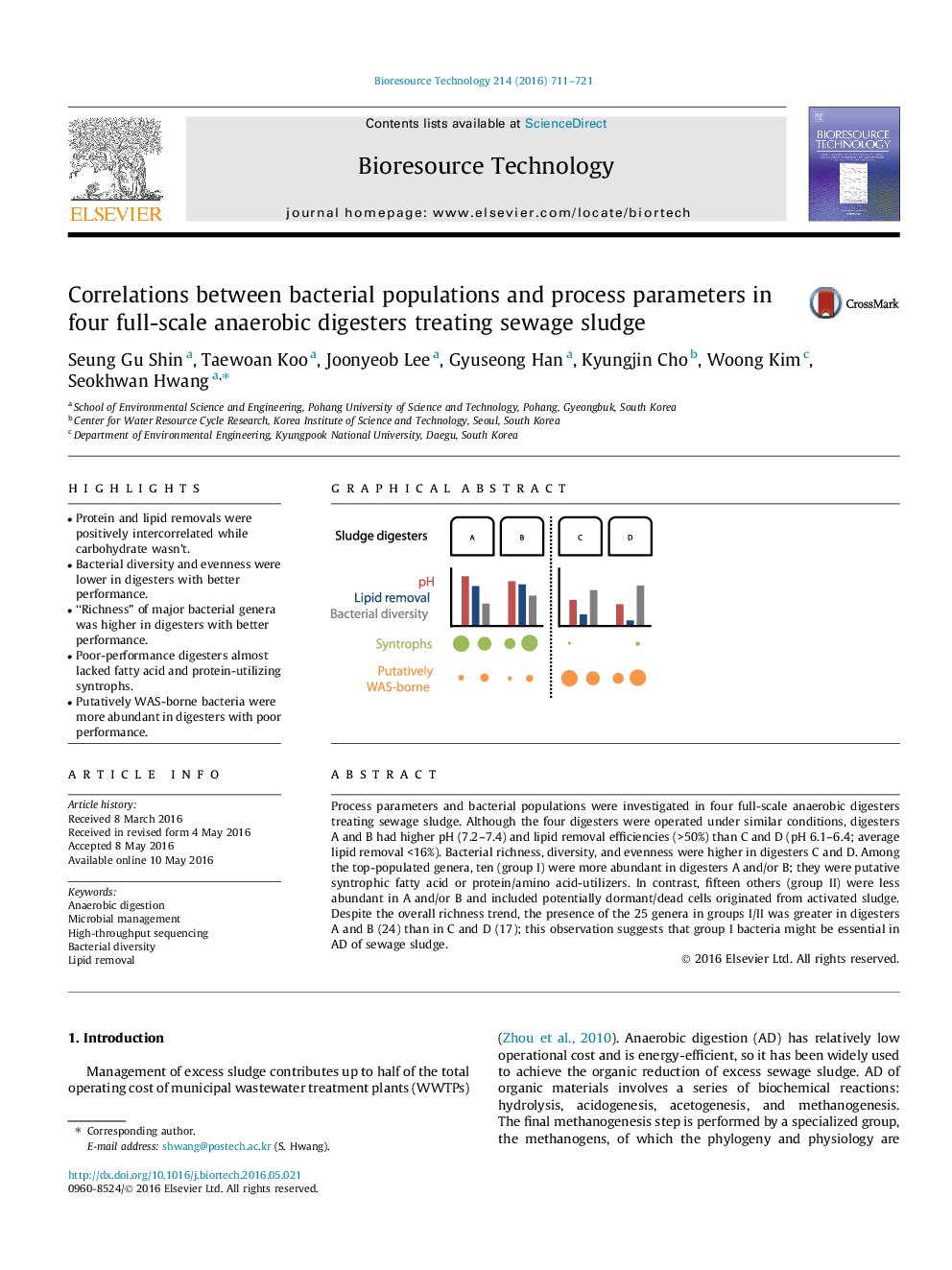| Article ID | Journal | Published Year | Pages | File Type |
|---|---|---|---|---|
| 679065 | Bioresource Technology | 2016 | 11 Pages |
•Protein and lipid removals were positively intercorrelated while carbohydrate wasn’t.•Bacterial diversity and evenness were lower in digesters with better performance.•“Richness” of major bacterial genera was higher in digesters with better performance.•Poor-performance digesters almost lacked fatty acid and protein-utilizing syntrophs.•Putatively WAS-borne bacteria were more abundant in digesters with poor performance.
Process parameters and bacterial populations were investigated in four full-scale anaerobic digesters treating sewage sludge. Although the four digesters were operated under similar conditions, digesters A and B had higher pH (7.2–7.4) and lipid removal efficiencies (>50%) than C and D (pH 6.1–6.4; average lipid removal <16%). Bacterial richness, diversity, and evenness were higher in digesters C and D. Among the top-populated genera, ten (group I) were more abundant in digesters A and/or B; they were putative syntrophic fatty acid or protein/amino acid-utilizers. In contrast, fifteen others (group II) were less abundant in A and/or B and included potentially dormant/dead cells originated from activated sludge. Despite the overall richness trend, the presence of the 25 genera in groups I/II was greater in digesters A and B (24) than in C and D (17); this observation suggests that group I bacteria might be essential in AD of sewage sludge.
Graphical abstractFigure optionsDownload full-size imageDownload as PowerPoint slide
